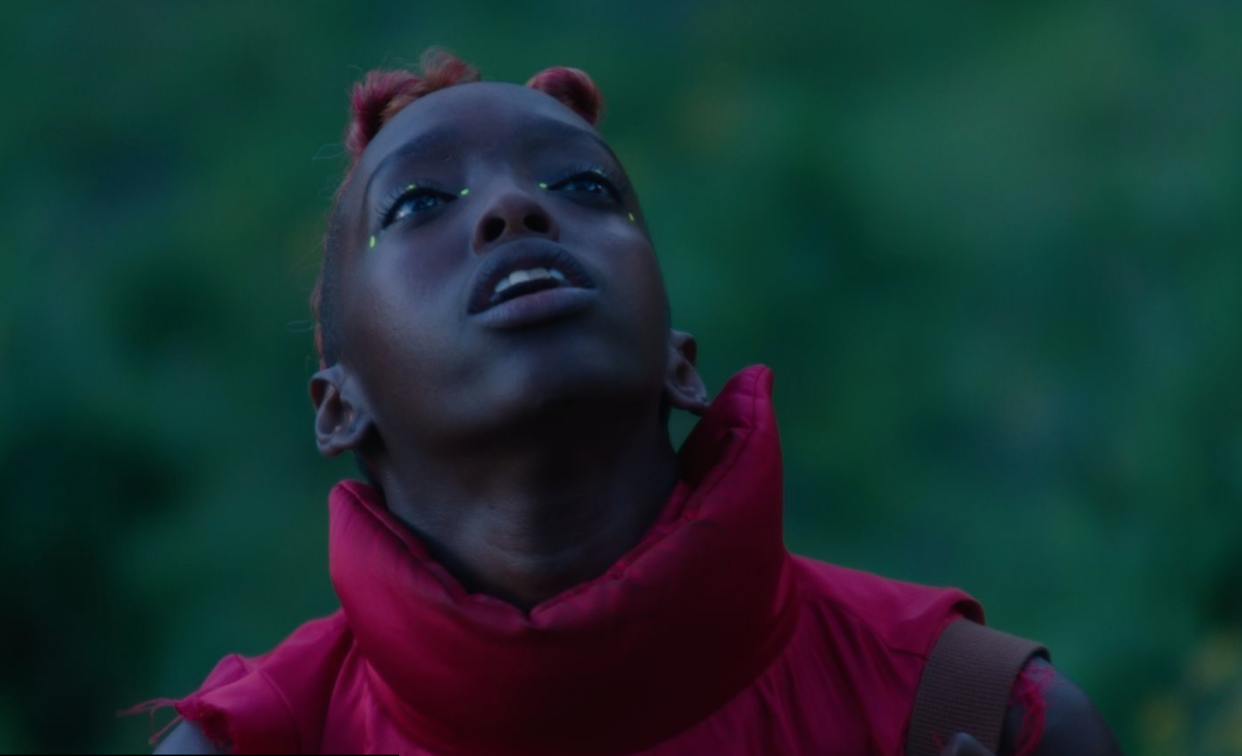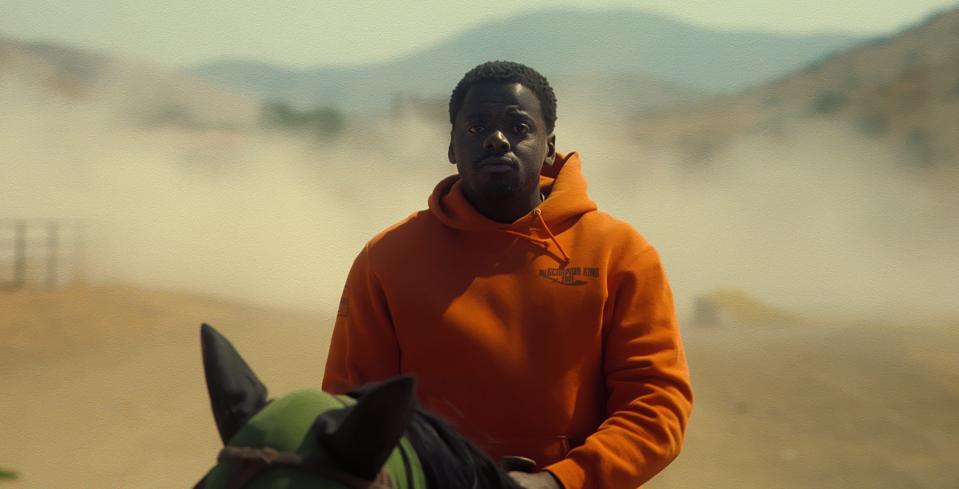Here’s the ‘Nope’ Metaphor You Missed: The Need to Diversify the Arthouse (Column)

- Oops!Something went wrong.Please try again later.
Fall season buzz is alive with celebrations of movie magic, from Steven Spielberg’s autobiographical “The Fabelmans” to “Empire of Light,” Sam Mendes’ romantic ode to old cinemas. But the most trenchant statement about the state of movies is here already.
It comes from Jordan Peele’s “Nope,” which confirms the filmmaker’s ability to generate suspense and awe from some seriously unpredictable places — but this Western sci-fi showdown also doubles as a meditation on the way film history marginalizes key figures and more crucially, assesses how the industry continues to alienate key voices. And, intentional or not, it’s also a window into the need to diversify arthouse audiences.
More from IndieWire
'DC League of Super-Pets' Opens to #1, but at $23 Million It's Another DC Disappointment
'Nope': Meet the Compton Cowboy Who Prepared Daniel Kaluuya to Play a Hollywood Horse Trainer
I won’t get into “Nope” spoilers, but it’s a brilliant conceit for Peele to envision the Hollywood horse-wranglers who are at the center of the movie as grandchildren of the Black jockey who sat astride the horse in one of the very first moving images ever captured on film. Generations later, the family still hovers on the outer reaches of Hollywood as spectators of the larger machine, uncertain how they fit in.
That’s a striking allegory not only for people of color in Hollywood but also for neglected audiences as well, and as good an excuse this column could ask for to explore why arthouses need to evolve. While Hollywood ratchets up longtime diversity concerns, a much bigger challenge faces independent exhibitors. They serve fickle audiences who became even more fickle during the pandemic, but many of these theaters chase the wrong demographics. The arthouse cliché is older white viewers provide its foundation, but that perception comes at the cost of attracting more audiences who want to see themselves onscreen.
Sure, the success of “Everything Everywhere All at Once” is a breakthrough moment for Asian American cinema — but its popularity owes much to the tremendous resources of A24 and a release strategy that looks more like a mainstream movie than a specialized release. If arthouses — and the distributors that rely on them — want more diverse audiences, they must embrace programming that engages those audiences above all. And to do that, they need to work together.
That’s the founding principle of Art House Convergence, but over the last few years this consortium of exhibitors has faced dire straits of its own making, due to all kinds of internal politics not worth relitigating here. Now, the organization has Sundance as a fiscal sponsor and a transitional committee focused on creating a board and expanding membership to address previous diversity concerns.
Jessica Green, a member of the Art House Convergence Transitional Working Group, told me that the AHC’s new identity will be tied to a transformational approach to the future of the arthouse itself. “There was an idea of what arthouse was, what independent film, that was fairly whitewashed,” she said. “It didn’t work too hard to center nonwhite experience.”
Green, who serves as the artistic director of the Chromatic Black Collective, also manages the Ida B. Wells fund, which invests in short films emerging Black filmmakers that the collective will market and distribute. As the former director of the Houston Cinema Arts Festival and the Maysles Film Center in Harlem, she spent years working to engage audiences of color with the kind of bold, challenging cinema that keeps local film culture alive and inspires new generations of moviegoers with adventurous taste.
“The demographics are shifting,” she said. “Right now, it’s transform or die. The space has to shift fully to address these changing demographics to be viable into the future.”
Green said AHC is keen to add members from venues and curatorial projects around the country that haven’t been as well represented in the past. “We’re really trying to expand our membership to have a representative base out of which we’re hoping some leadership candidates will emerge,” she said.
She emphasized the need for film festivals, societies, and other organizations to work on “getting out of geographic arts ghettos” and “going directly to the communities.” That’s critical, but it comes hand in hand with serving those audiences with programming that excites them in ways the arthouse scene hasn’t always managed to do.
Saul Williams, co-director of this summer’s Afrofuturist arthouse release “Neptune Frost,” told me that he recognized these barriers during his days as a burgeoning cinephile in New York. “I had to go through a lot to find foreign art films that didn’t star Juliette Binoche or Isabelle Huppert,” he said. “The public is willing to ingest more than the system gives them. Our game is, how we dance through a system that wants to think, ‘Who is this film for?’”
His partner and co-director Anisia Uzeyman joined him on the call and jumped in. “But it’s like anything when you’re Black,” she said, noting that “Neptune Frost” was passed over by several arthouse distributors even as it made its way from Cannes to NYFF to Sundance, the rare film to do so. “The response was always, ‘It is not commercial for us, because it’s not our public,’” she said. “They forget that the public is us, too.”

Kino Lorber, exclusive to IndieWire
The movie ultimately grossed $171,000 in limited release across the U.S. before it hit VOD in July, but Williams and Uzeyman said they felt validated by the diverse audience reception they experienced. That’s partly because they traveled beyond the bubbles of New York and L.A. to find it, and secured a critical partner to do that.
While Kino Lorber distributed “Neptune Frost,” it received an assist from DEDZA Films, a boutique distributor launched by a young executive named Kate Gondwe focused on marginalized artists. (In her day job, she works in marketing at Neon.) Any small distributor keen on expanding their audience base would be wise to give her a call, because Gondwe is focused on the survival tactics that, as Green noted, are essential to the survival of the arthouse.
Gondwe received a Sundance grant to support marketing costs associated with the film and focused on getting the filmmakers to visit overlooked markets like Philadelphia and Baltimore that cater to Black audiences. She told me the opening-weekend audience for “Neptune Frost” at BAM was more than 50 percent BIPOC as the result of additional promotional efforts.
“At the end of the day, it’s all about whether the audiences are aware of these films,” she said. “A lot of that is marketing and outreach, but also that exhibitors are engaging with a diverse audience from the start.”
Gondwe saw “Neptune Frost” as a success on the precise terms established for it from the start. “You have to look at what kind of film it is and what films it’s being compared to,” she said. “We felt that key markets we identified performed well, and that also helped the PVOD release.” Going forward, she added, geographical diversity would remain central to her focus. “It’s something often overlooked,” she said, “which is how our industry is set up.”
The onus is also on distributors themselves. “That’s why acquisitions are so important for these films,” she said. “A lot of diverse audiences aren’t seeing themselves.”

Photo Credit: Universal Pictures
Which brings us back to “Nope.” It’s a total blast, a dizzying satiric action ride with a lot on its mind. The movie’s finale — still no spoilers, I promise — digs deep on the power of representation, and in particular what it means to capture an image that has never been seen before. That’s the arthouse conundrum in a nutshell.
—
This column is meant to highlight opportunities for sustainability, but I’m sure there is more work being done to diversify the arthouse than the examples highlighted above. I welcome readers to reach out with their own ideas: eric@indiewire.com
My previous column urging streamers to make more output deals with smaller distributors elicited some strong responses. No surprise there. Here’s some of the feedback I received.
“If only companies were required to do public good! If only they felt quality matters. Perhaps it does as an initial way of getting attention fast but it is not the low hanging predictable fruit that is the easiest investment. …I suspect we will move to short term licensing through direct supply relationships — this could be for the very same distributors who are savvy at launching & marketing challenging titles, but that is what the streamers need (the positioning) and not the libraries. It is a business of the new and the past is for those who can squeeze the juice out of the scraps.”
—Former distribution executive (anonymous)
“It’s riskier to take bigger bets on MGs and marketing spends with no guarantee of a good TV or SVOD deal. As an example, even though our film ‘Corpus Christi’ was nominated for an Oscar, Netflix, Hulu, Amazon, etc. all passed on the film (and passed again AFTER it was nominated).”
—Michael E. Rosenberg, Film Movement
“I don’t have access to any secret info here, but I’ve spoken with execs in the past who told me that they’ve looked at past data for many of these types of films – watch time, views and more importantly, whether it gains or keeps subs – and it was near zero. This was also apparently true for many classics you’d see on Netflix (or Hulu) in the past. I’ve heard that people would put these in their queue but never watch them, and when removed from availability, they didn’t watch any less of the other stuff or leave the service. Sure, a past arthouse film may not correlate with a new one, but look who they have output deals with today, and it’s the most “mainstream” of the distributors. And I’d be surprised if those folks keep these deals much further into the future.”
—Brian Newman, consultant, Sub-Genre
Best of IndieWire
New Movies: Release Calendar for August 5, Plus Where to Watch the Latest Films
Adam Driver-Led 'White Noise' Premieres at 2022 Venice Film Festival: Get the Details
The 50 Best Sci-Fi Movies of the 21st Century, from 'Nope' to 'Everything Everywhere All at Once'
Sign up for Indiewire's Newsletter. For the latest news, follow us on Facebook, Twitter, and Instagram.

